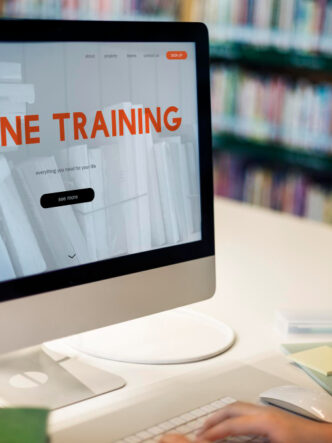
The world of marketing has come a long way in recent years. Not only have the platforms where we deliver marketing messages changed – and multiplied – but the very essence of those messages has diversified too.
One big development recently has been the use of educational videos to both impart information and market the related product. But how effective is this and is it something we should consider using more?
What is an Educational Video?
You will already have seen some form of educational video related to marketing; most come in the form of ‘how to’ videos. They’re videos that teach your customers something of value. It may be they help solve a particular problem – for example, how to set up a Firestick on a smart TV. This is a good way of providing information direct to customer (DTC).
Or they may give information on a product the customer is considering buying to inform them of features and benefits and push them towards a purchase. By providing info the customer needs, you’re helping them come to you. In essence, these videos are a type of inbound marketing.
What Makes a Good Educational Video?
It’s not enough to point the camera and click; you need to consider what you’re presenting and how you’re presenting it. Make a checklist of what your video should achieve before you plan what it will look like. Creating a good video can be easy.
1. Answers Questions
Your customers are looking for specific information, so make sure your video provides them with it. If customers need to know about video conference platforms and how to set them up, for example, ensure you cover everything needed in easy-to-follow steps. Or if you think prospective customers are unsure what benefits a product offers, make certain the video tells them.
2. Creates Trust and Authority
You want your company/brand to be recognized as an authority on what is being discussed. If somebody is looking for the best project management software, establish your credentials as an expert on the subject.
Remember, at this stage, you are informing, not selling, so this free education can both establish your authority and build trust.
3. Simple to Understand
We appreciate that some topics can get complex at times. The idea of something like a hybrid cloud platform can seem bewildering to many, but if you take the time to break the information down into easily digestible chunks of information, you make the entire subject more accessible.
4. Promotes Enthusiasm
The thing about learning is that once someone overcomes the initial hurdle, they gain a thirst for more knowledge. Starting with simple and easy-to-understand info encourages your potential customers to want to learn more. Something as simple as learning how to screen share can lead to wanting to know what else they can do with a particular type of software.
5. Flexible
While educational marketing videos may be of most use at the beginning of a customer’s journey, the reality is that, because they’re so flexible, you can fit them anywhere in your marketing funnel. Different videos can be accessed at different stages or a customer may refer back to a previously watched video to reiterate some points.
6. Knows Your Audience
There’s little point in creating a video that doesn’t meet your audience’s needs or cater to their abilities. Know potential pain points and how to help them overcome them. If creating videos on how to work remotely, for example, recognize what hurdles remote working throws up and how you can help solve these issues.
7. Avoids Brand Focus
Now, this may seem counterintuitive, but try not to focus too much on your brand. Your initial purpose is to inform, and while some brief mention of your product or a visible logo can be acceptable, the idea at this stage is to provide a more generic education. Let the customer make the leap later, once they see you and your videos as a trusted source.
8. Provides Quality Every Time
As with many marketing strategies, quality is important. While you don’t need a Hollywood budget, you don’t want to shoot a video on Trevor’s smartphone in the break room either. There are plenty of guides available online, from how to create a training video to how to edit a video for free. Always ensure information is accurate and the video quality is high.
9. Uses an Appropriate Style
Deciding on the style of video you’ll make is an important decision. While you may think an animated video won’t work, these can be a great form of ‘edutainment’. It will depend on the subject matter and how you want to convey your brand image as to the right style for your video. It can also depend on the level of sales engagement you want to achieve.
10. Is Imaginative
There will often be cases where a ‘dry’ video is required to explain something complicated as simply as possible. But in most cases, you can be as imaginative as you like. These videos are, for the most part, meant to be both entertaining and informative. And, while a subject such as how to develop skills in your strategic team may sound uninspiring, a little flair can go a long way.
The Takeaway
If used properly, educational videos can be a great marketing tactic. YouTube is full of them, with searches for ‘how to’ videos growing by about 70% each year. There are also many free educational apps available, which offer a more specialized route to consider if you have a wide range of products/services you want to inform your audience about.
The simple rule to remember is ‘inform first, make a sale after’. Establish your company or brand as not only an expert but a source that can be trusted. Look for the conversion once that relationship has been established, and it can pay dividends in the future. Close in on the sale too quickly, and you may instead put the customer off.
You never know; you might find you’re a budding Spielberg once you make your first video!










